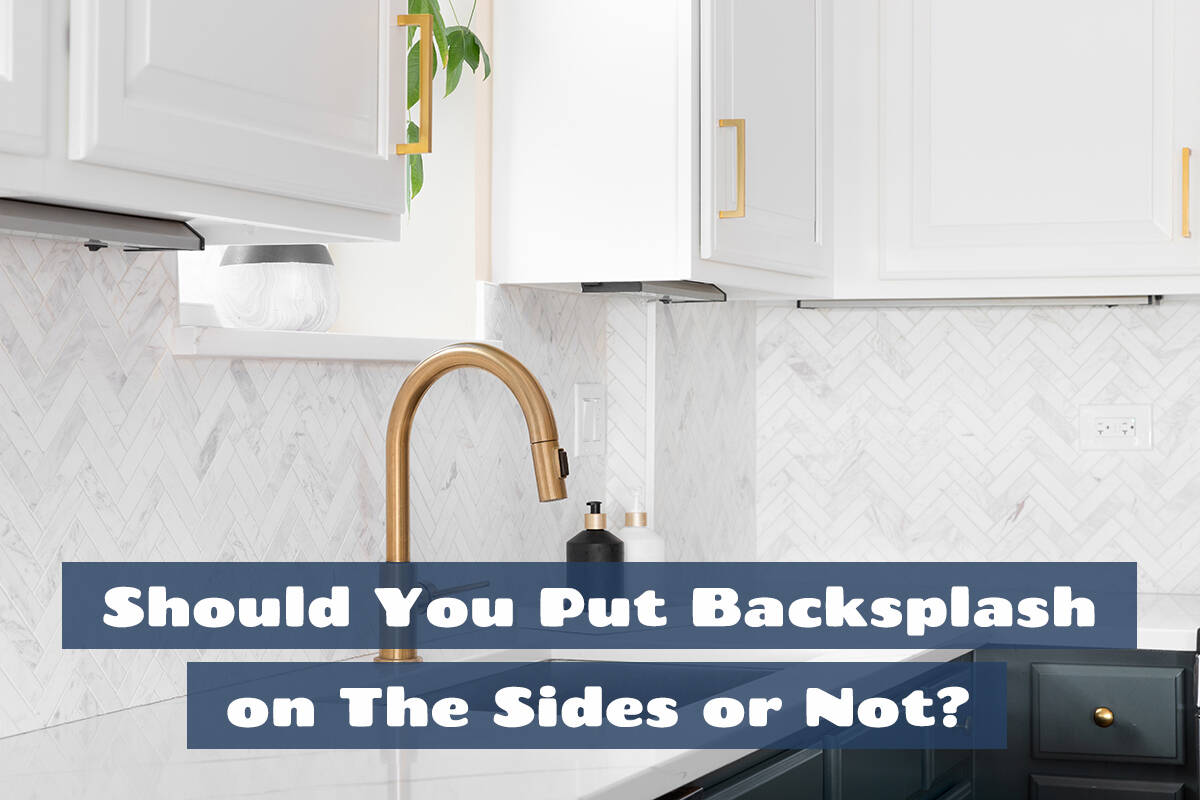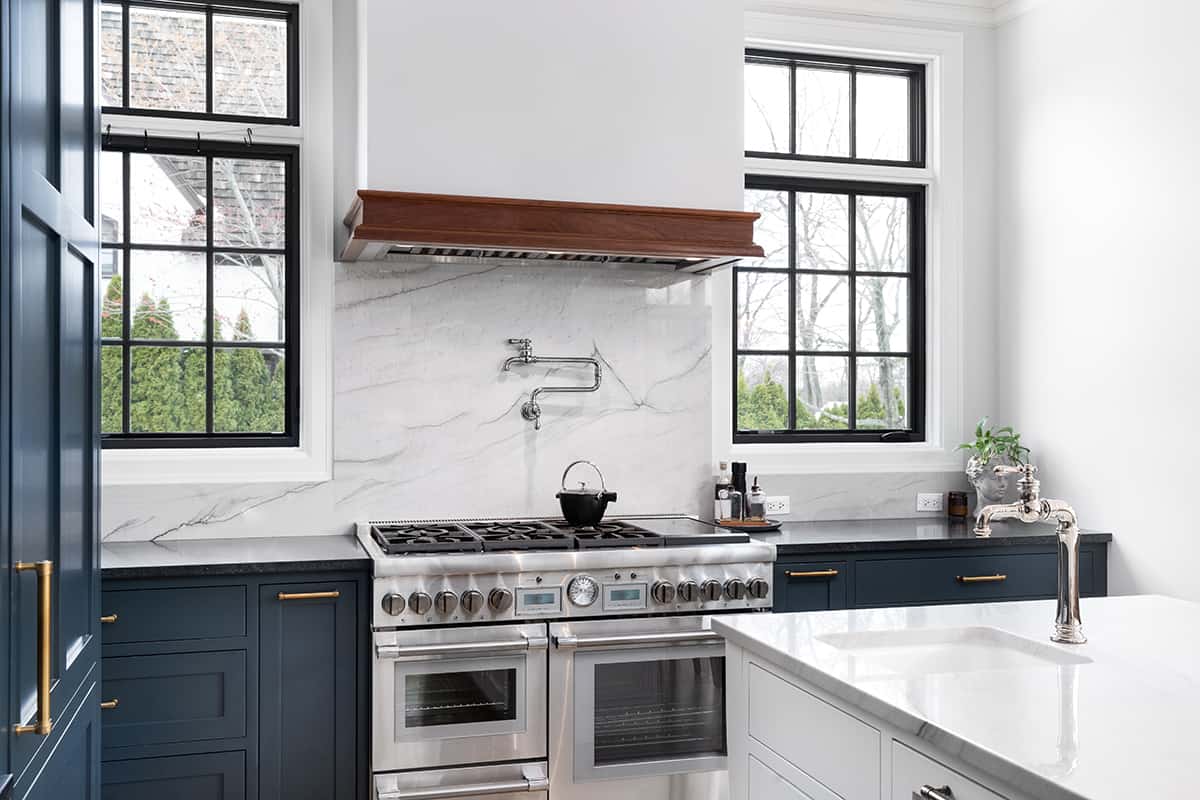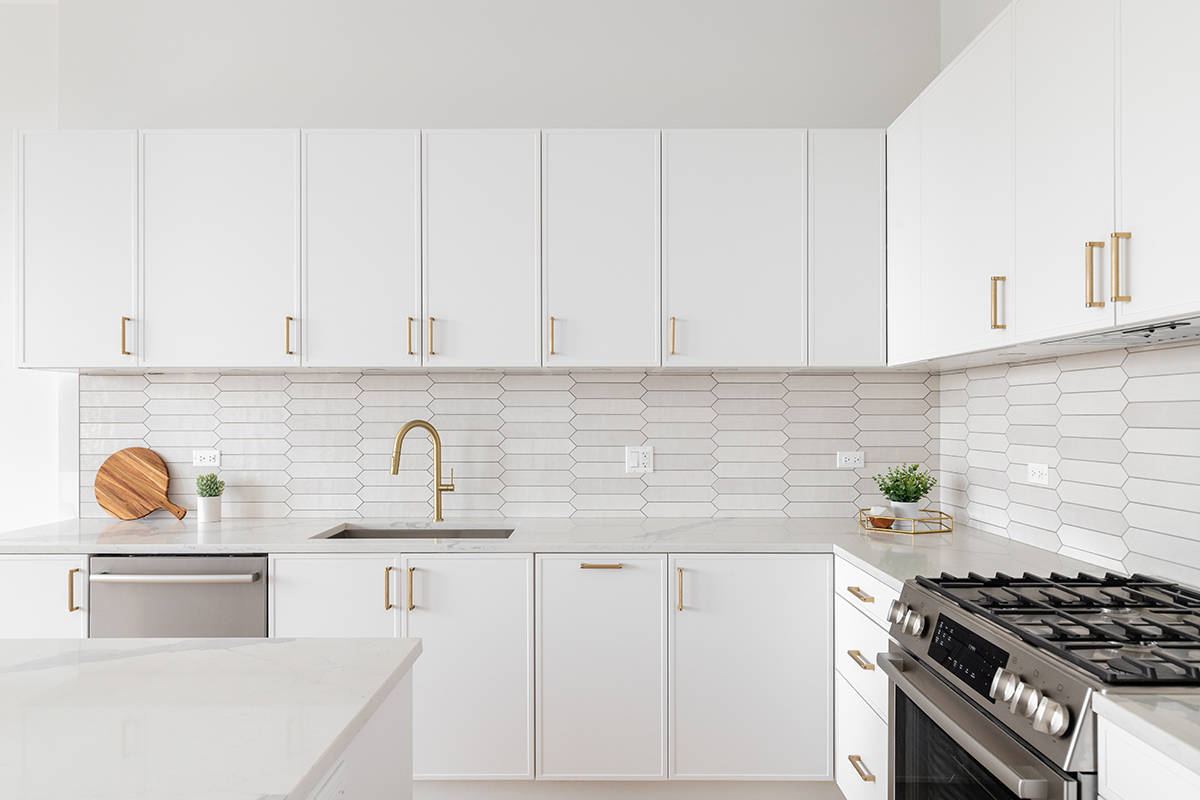A backsplash is a protective and decorative element installed on the walls above a countertop, typically in kitchens and bathrooms. Its primary purpose is to prevent water, liquids, and other substances from splashing onto the walls and causing damage or staining. Backsplashes come in various materials, styles, and designs, serving both functional and aesthetic roles in interior design.
When installing a backsplash a common question that arises is whether or not you should install a backsplash around the sides of a sink. To decide if you want to continue the backsplash on side walls, first, consider the features of a backsplash.
Here is a quick takeaway.
Installing a backsplash on the side walls of a kitchen or bathroom offers both aesthetic and practical benefits, such as enhanced room aesthetics, increased wall protection, and easier cleaning. However, it also comes with potential drawbacks, including increased costs, maintenance, and the possibility of a crowded appearance in smaller spaces. Homeowners should weigh these pros and cons, considering factors like design continuity, resale value, and personal preferences, to determine if a side backsplash is a suitable addition to their space.
Table of Contents
Features and Functions of a Backsplash
Protection
Backsplashes shield the walls from water, grease, food particles, and other substances that can be splashed or spilled during cooking, food preparation, or other activities. They act as a barrier, preventing stains, mold growth, and damage to the wall surface. Continuing your backsplash on side walls will add increased protection.
Easy Cleaning
Backsplashes are generally easier to clean than painted or untreated walls. They provide a smooth, non-porous surface that can be wiped clean with minimal effort, saving you time and making your kitchen or bathroom maintenance more manageable.
Aesthetics
Backsplashes contribute to the overall aesthetics of a space. They offer an opportunity to introduce color, texture, and pattern into the design, enhancing the visual appeal of the room. Continuing a backsplash on side walls can create the opportunity to add more color and texture to a space.
Design Element
Backsplashes are available in a wide range of materials, such as tiles, glass, stone, metal, and even reclaimed wood. This diversity allows you to choose a material that complements your countertops, cabinets, and overall design theme.
Focal Point
In some cases, a backsplash can become a focal point of the room, drawing attention and adding personality to the space. Intricate tile patterns, mosaic designs, or unique materials can make the backsplash a central design feature. Adding a backsplash to the side walls can further identify the sink area as a focal point.
Customization
Backsplashes can be customized to suit your preferences and design vision. You can choose colors, patterns, and textures that align with your style, whether it’s modern, traditional, rustic, or something else entirely.
Pros and Cons of Installing Backsplash on Sides
It isn’t standard practice to install a backsplash on the side walls of a kitchen or bathroom, but there are benefits to doing so. Here we explore the pros and cons of continuing a backsplash around the sides of a sink. For those hesitant about the installation, considering backsplash alternatives that are easier to apply or remove, like vinyl adhesive backsplashes, may address concerns regarding cost and permanence.
Pros
Enhanced Aesthetics
A side backsplash can create a cohesive and finished look, tying together the overall design of your kitchen or bathroom. This will make the backsplash look like more of a central part of the room rather than a standalone feature.
Protection
Side backsplashes can prevent water, grease, and other liquids from splashing onto the walls and causing damage or staining. Consider continuing your backsplash onto side walls if they are quite close to your sink or hob.
Design Continuity
If you have continuous countertop surfaces that wrap around corners, adding a side backsplash can maintain a consistent design theme.
Increased Resale Value
A well-designed and functional kitchen or bathroom, including side backsplashes, can enhance the value of your home and make it more appealing to prospective buyers. This is something to consider while renovating a kitchen or bathroom if you ever plan to sell your property in the future.
Cons:
Maintenance
While side backsplashes make cleaning easier in one sense, they also mean more surfaces to clean overall. This might increase the maintenance workload in the long run. The type of tiles you use can also affect maintenance, for example, tiles with rough surfaces such as slate will be more difficult to clean, so installing more of these can make cleaning a more time-consuming job.
Limited Space
Depending on the available space, adding side backsplashes could make your countertop area appear more confined or crowded, especially if your kitchen or bathroom is small.
Cost
Adding side backsplashes can increase the cost of your project due to the need for additional materials, labor, and installation time. This may not be a concern if you have chosen cost-effective tiles, but for more expensive tiles the decision to add additional backsplash areas can greatly increase the overall expense.
Design Considerations
If not executed well, side backsplashes can disrupt the flow of the design or clash with the main backsplash and countertop materials.
How a Side Backsplash Can Improve Your Rooms
The pros and cons listed above give a brief overview of how installing a side backsplash could positively or negatively affect your space. Here we take a more in-depth look at the ways a side backsplash can improve your home.
The Aesthetic Appeal
A side backsplash can work wonders for the overall aesthetics of your space. By extending the backsplash to the sides of your countertops, you create a cohesive and harmonious design that ties your entire room together. This approach is particularly practical if you have a continuous countertop surface that wraps around corners.
The side backsplash ensures a seamless transition between different parts of your kitchen or bathroom, offering a visually pleasing and polished look. If you have decided to make a statement with your backsplash, for example, by choosing a bold tile color, then increasing the size of the backsplash by extending it to side walls will make it have an even greater impact.
If you love the tiles you have chosen, you may also be excited about the prospect of using those tiles on as much surface space as possible, and a backsplash on a side wall creates this opportunity.
Practical Protection
Beyond aesthetics, practicality plays a significant role in deciding whether your backsplash will continue around the side walls. The primary advantage of adding a side backsplash is the protection it provides to your walls. Daily kitchen activities, such as cooking and cleaning, often result in splashes of water, sauces, and oils.
Over time, these substances can stain or damage your walls. A side backsplash acts as a barrier, shielding your walls from potential harm and making it easier to clean up after spills. A side backsplash in a bathroom will increase protection against water and toothpaste splatter ending up on the walls, which can make for much easier cleaning.
Cleaning Convenience
Cleaning is a chore that everyone has to tackle, and a side backsplash can simplify this task. Smooth and easy-to-clean surfaces are a hallmark of backsplashes, and extending this feature to the sides can significantly reduce your cleaning efforts.
Instead of scrubbing walls to remove stubborn stains, you can simply wipe down the backsplash, keeping your kitchen or bathroom looking fresh and pristine. To make the most of this benefit, be sure to choose a smooth splashback tile that will wipe down without any elbow grease required.
Balancing Design and Maintenance
While a side backsplash offers numerous advantages, it’s crucial to find the right balance between design and maintenance. While the added protection and easy cleaning are significant advantages, keep in mind that more surfaces mean more cleaning overall. If you prioritize a minimalist and clean look, you might prefer uninterrupted walls.


